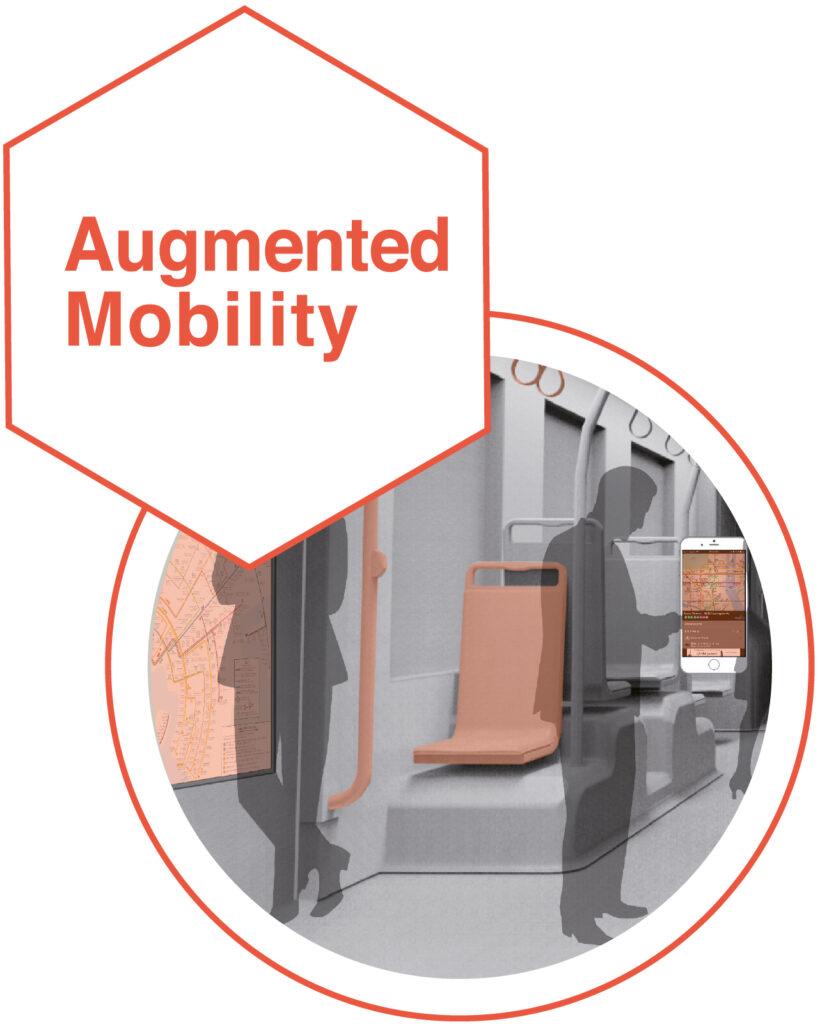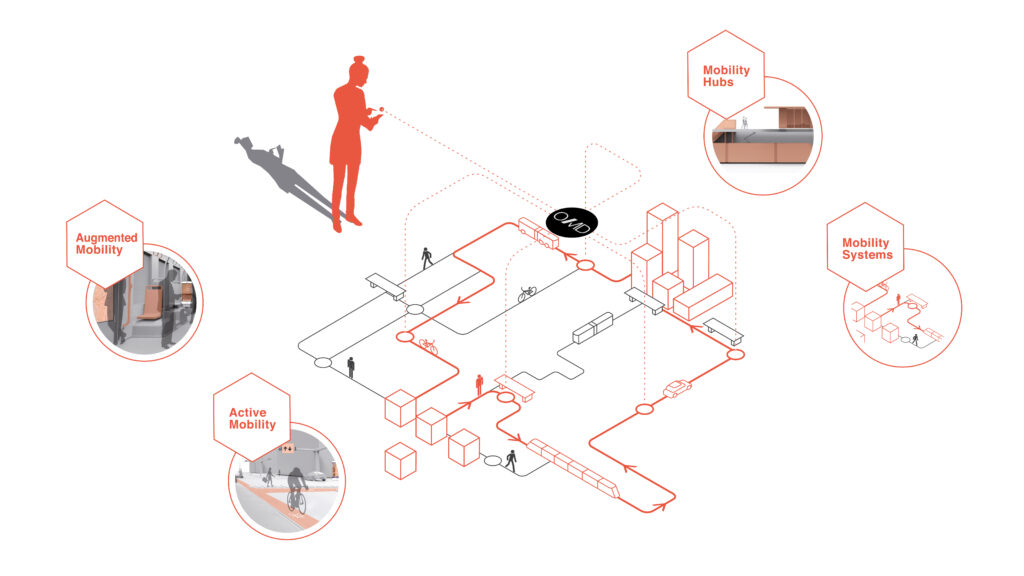
Climate change requires new solutions for environmentally friendly and people-friendly mobility, also to regain quality of life, especially in cities. Mobility stands for the necessity, but also the ability, to move around in space. Overcoming distances, being mobile and being able to determine this yourself is a fundamental need.
This is not only a political, organizational and planning task, but also represents a particular challenge for the designing disciplines, for architecture and design, because design decisions mediate between people and the mobility system and thus influence user experiences.
How can the interaction of people with transport infrastructure, means of transport, buildings, objects and information be designed in such a way that positive mobility experiences are created that motivate sustainable mobility behavior? The decisive factor here is not the mode of transport itself, but the quality of movement: networked mobility across all modes of transport. This concerns not only functional aspects, but also emotional and symbolic ones.
To achieve this, we evaluate the effectiveness of planning and design decisions on people on a scientific basis. To this end, we carry out basic as well as applied research projects, also with partners from the social sciences and engineering.
Our goal is to use research to develop innovative methods, specific tools and strategies for sustainable mobility design in order to make sustainable mobility a positive experience – more accessible, more efficient, more pleasant and more visible.
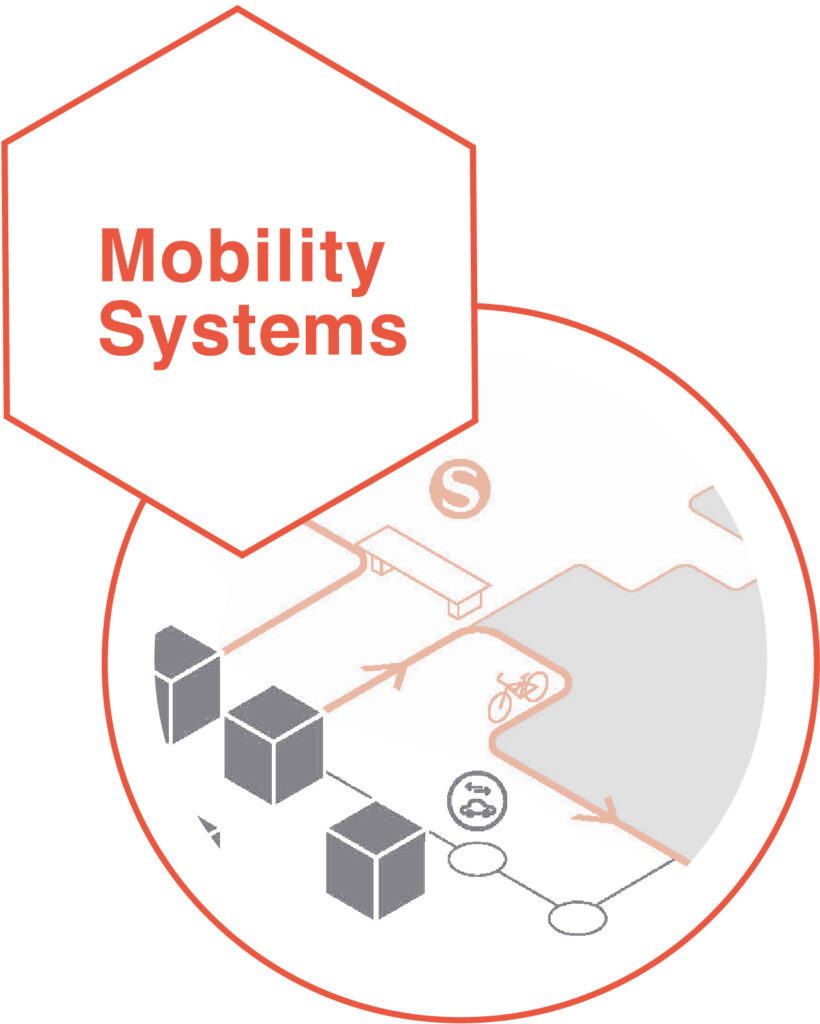
In mobility systems, the demand for mobility, the transport infrastructure and the available mobility services interact. In terms of environmentally friendly intermodal mobility, this includes walking and cycling, public transport services, but also collaborative services (sharing). A major challenge is the networking and recognizability of the intermodal mobility system, its accessibility and comprehensibility. How can the design of a sustainable mobility system create positive mobility experiences? How can the needs and wishes of users be better taken into account?
Cycling and walking are essential elements of sustainable mobility systems. How can urban and mobility spaces be designed to encourage active mobility? So that cyclists and pedestrians enjoy moving around the city in a relaxed manner and find their way safely? The design of cycle paths and cycle streets, for example, is particularly meaningful and requires a rethink of the division of road space and priority between modes. Good design solutions promote acceptance and can motivate more active mobility. This also includes the consistent inclusion of pedestrian traffic as a component of intermodal mobility systems.
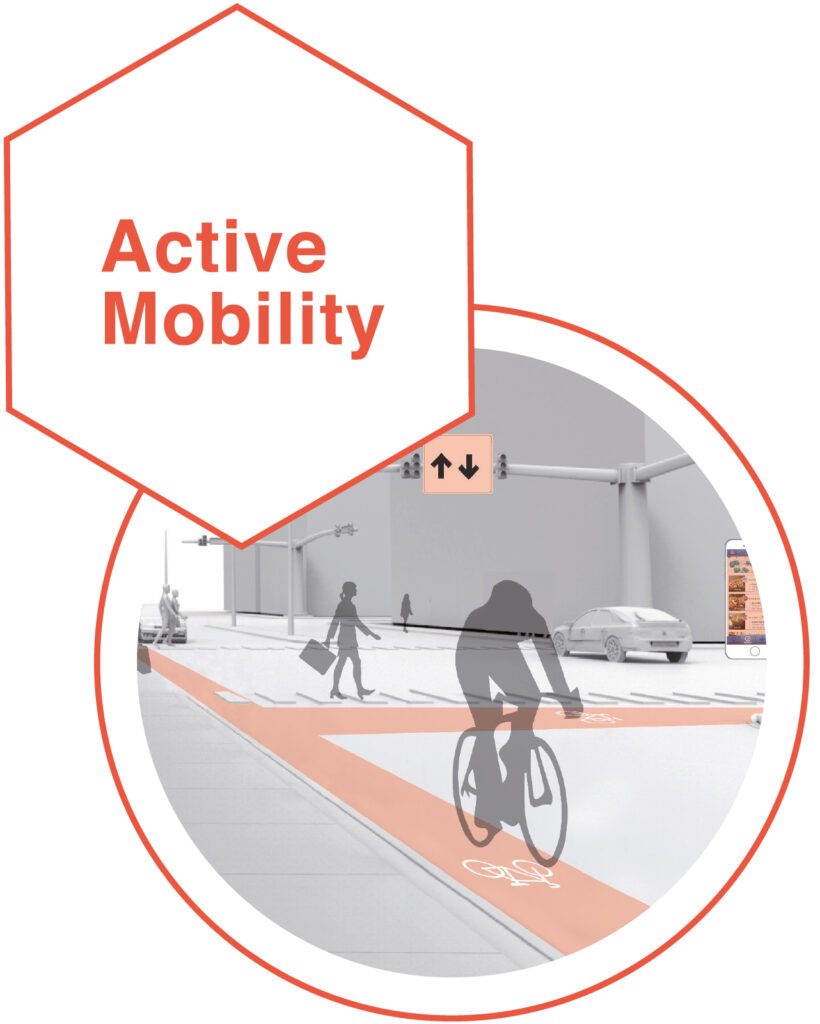
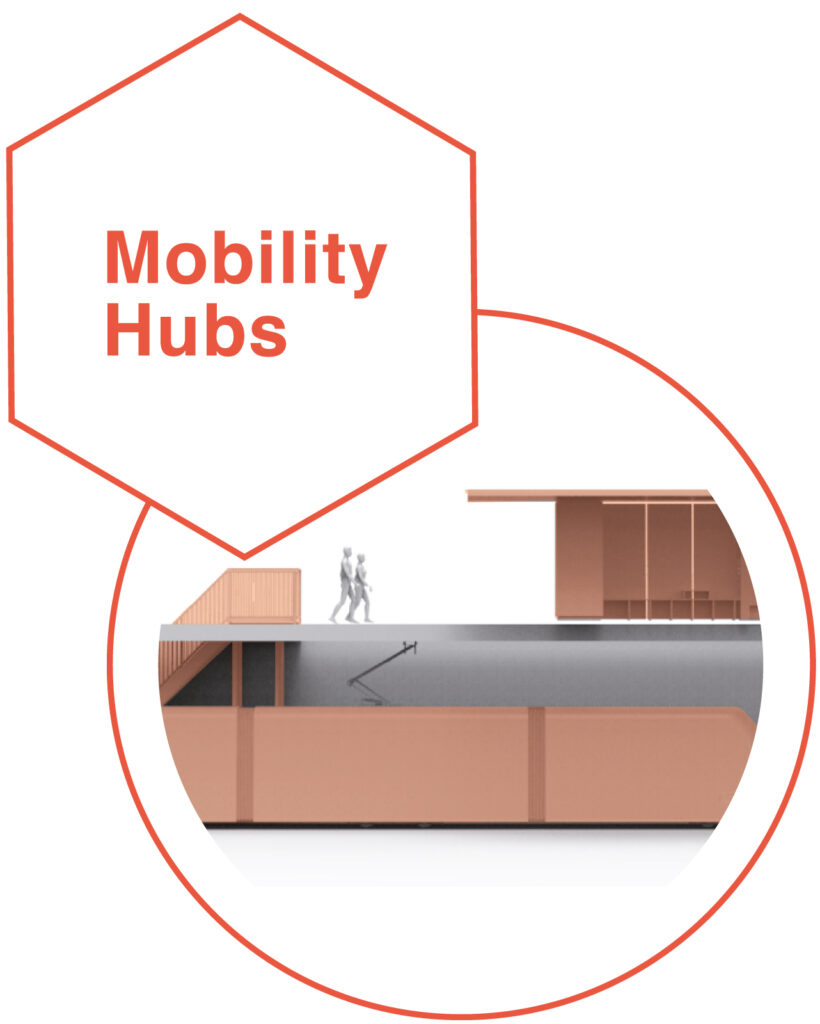
Hubs link different mobility services and are therefore of central importance in an intermodal mobility system that offers efficient, attractive and environmentally friendly solutions for individual mobility needs through the easily accessible combination of walking, cycling, public transport and car (sharing). The transitions between such services require comprehensive information for orientation in the urban space. Symbolic-emotional factors that influence the feeling of safety and well-being must also be given greater consideration. Design concepts are developed and tested using prototypical situations such as waiting or switching between forms of mobility.
The digital, internet-based information and communication space is increasingly overlapping the real mobility space. As a result, media interactions are possible beyond the specific location, allowing the mobility system to be viewed as digitally extended. This also means that design concepts are required that guarantee systemic recognizability in both analog and digital space. Virtual reality (VR), on the other hand, opens up opportunities to experience new mobility spaces immersively and actively by overlaying the analog and digital worlds. In this way, user feedback can already be integrated into the design and planning process.
